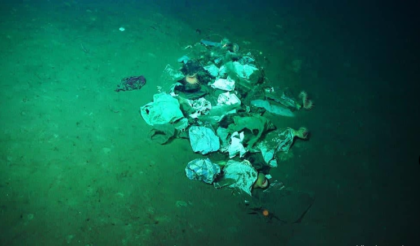
Schmidt Ocean Institute
The photograph was taken less than a month ago, while a research vessel was working between Puntarenas and Isla del Coco analyzing seamounts and reviewing the relation between what happens under the sea and the surface.
The image was taken 3,500 meters deep, confirmed Haydée Rodríguez, deputy minister of Water and Seas during a hearing in the Economic Affairs Committee. That was part of her presentation to refer to bill 21.159 “Law to solve pollution by plastic waste,” presented by legislator Paola Vega.
Rodríguez explained that no human presence had been registered in that place where the photograph was taken by a robot. However, we still left that mark there.
According to the national strategy for the replacement of single-use plastics by government renewable and compostable alternatives 2017-2021, about 110 tons of plastic remain in the environment every day in Costa Rica.
The document also explains that
the Ministry of Finance reports an annual production of at least 600 million disposable plastic bottles, of which almost 90% are not collected and end up accumulated in watersheds, coasts and marine environments. Plastics are synthetic materials composed of polymer macromolecules and highly resistant to the environment.”
The deputy minister made reference to a research carried out by the University of Costa Rica (UCR) that found plastic in the stomachs of 30 sardines. So the problem could affect the diet of Costa Ricans who consume this product.
During the hearing, Rodríguez said there are 127 plastic import companies and 15 export companies. However, they do not have data on how many people work for this industry.
The initiative aims to eliminate the commercialization of single-use plastic products, as well as Styrofoam. Also, it creates an environmental tax that seeks to encourage the purchase of environmentally-friendly products. According to data from the Presidential House, that tax would generate $25 million a year that would be deposited in a blue fund to finance activities such as collecting plastic by communities.